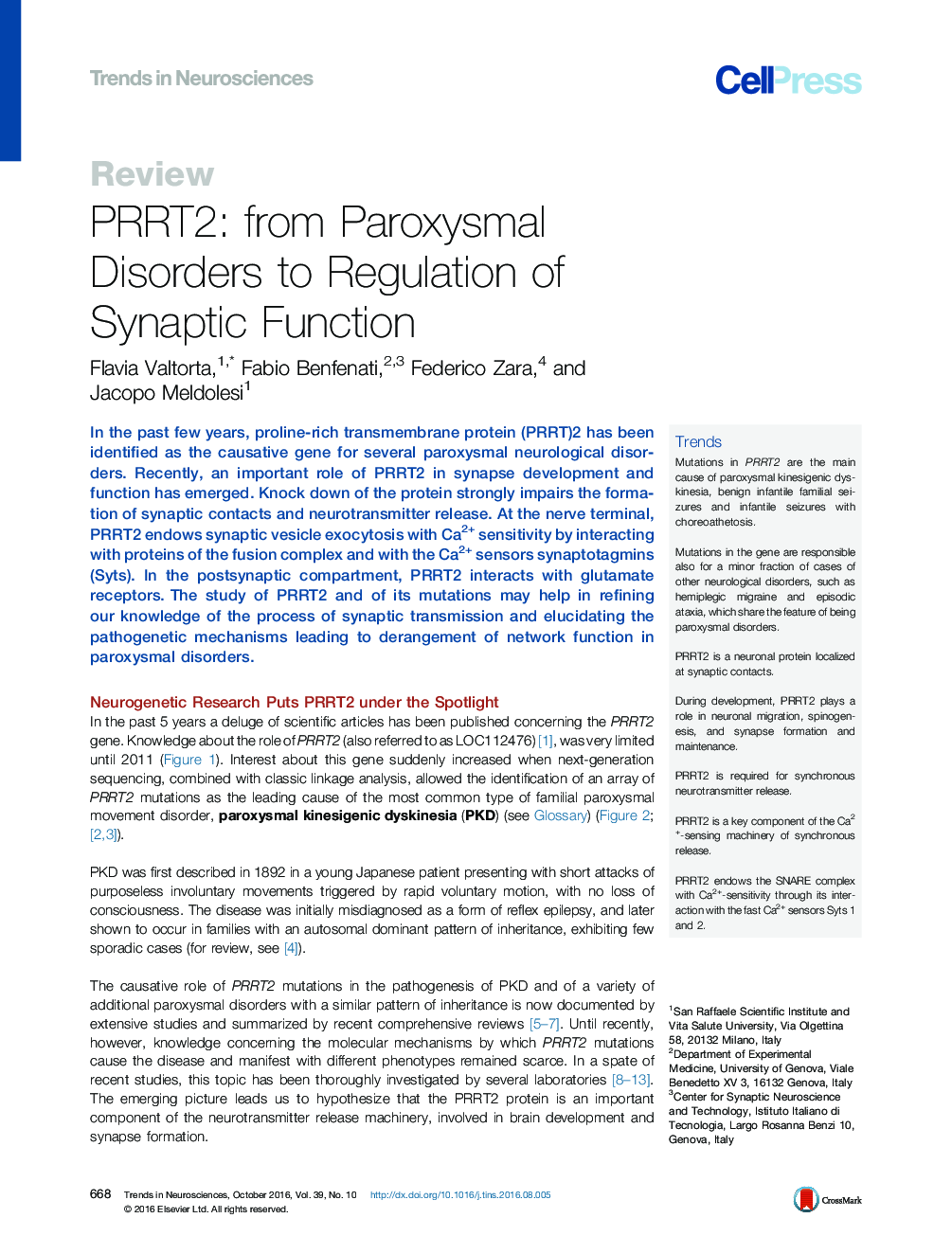| Article ID | Journal | Published Year | Pages | File Type |
|---|---|---|---|---|
| 4354080 | Trends in Neurosciences | 2016 | 12 Pages |
In the past few years, proline-rich transmembrane protein (PRRT)2 has been identified as the causative gene for several paroxysmal neurological disorders. Recently, an important role of PRRT2 in synapse development and function has emerged. Knock down of the protein strongly impairs the formation of synaptic contacts and neurotransmitter release. At the nerve terminal, PRRT2 endows synaptic vesicle exocytosis with Ca2+ sensitivity by interacting with proteins of the fusion complex and with the Ca2+ sensors synaptotagmins (Syts). In the postsynaptic compartment, PRRT2 interacts with glutamate receptors. The study of PRRT2 and of its mutations may help in refining our knowledge of the process of synaptic transmission and elucidating the pathogenetic mechanisms leading to derangement of network function in paroxysmal disorders.
TrendsMutations in PRRT2 are the main cause of paroxysmal kinesigenic dyskinesia, benign infantile familial seizures and infantile seizures with choreoathetosis.Mutations in the gene are responsible also for a minor fraction of cases of other neurological disorders, such as hemiplegic migraine and episodic ataxia, which share the feature of being paroxysmal disorders.PRRT2 is a neuronal protein localized at synaptic contacts.During development, PRRT2 plays a role in neuronal migration, spinogenesis, and synapse formation and maintenance.PRRT2 is required for synchronous neurotransmitter release.PRRT2 is a key component of the Ca2+-sensing machinery of synchronous release.PRRT2 endows the SNARE complex with Ca2+-sensitivity through its interaction with the fast Ca2+ sensors Syts 1 and 2.
